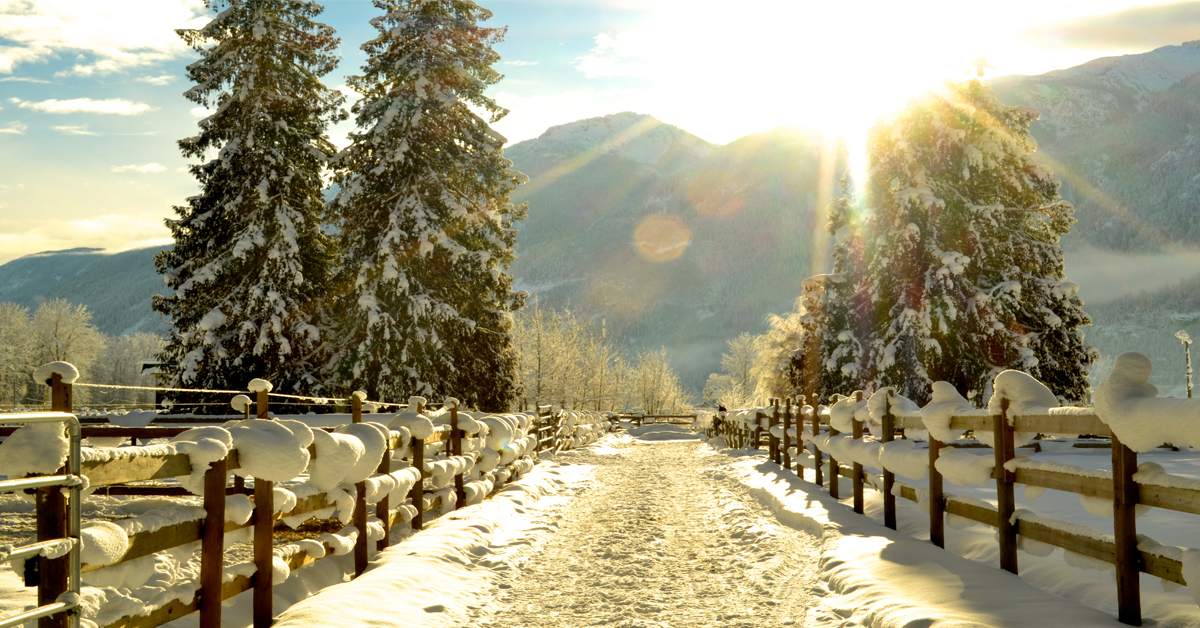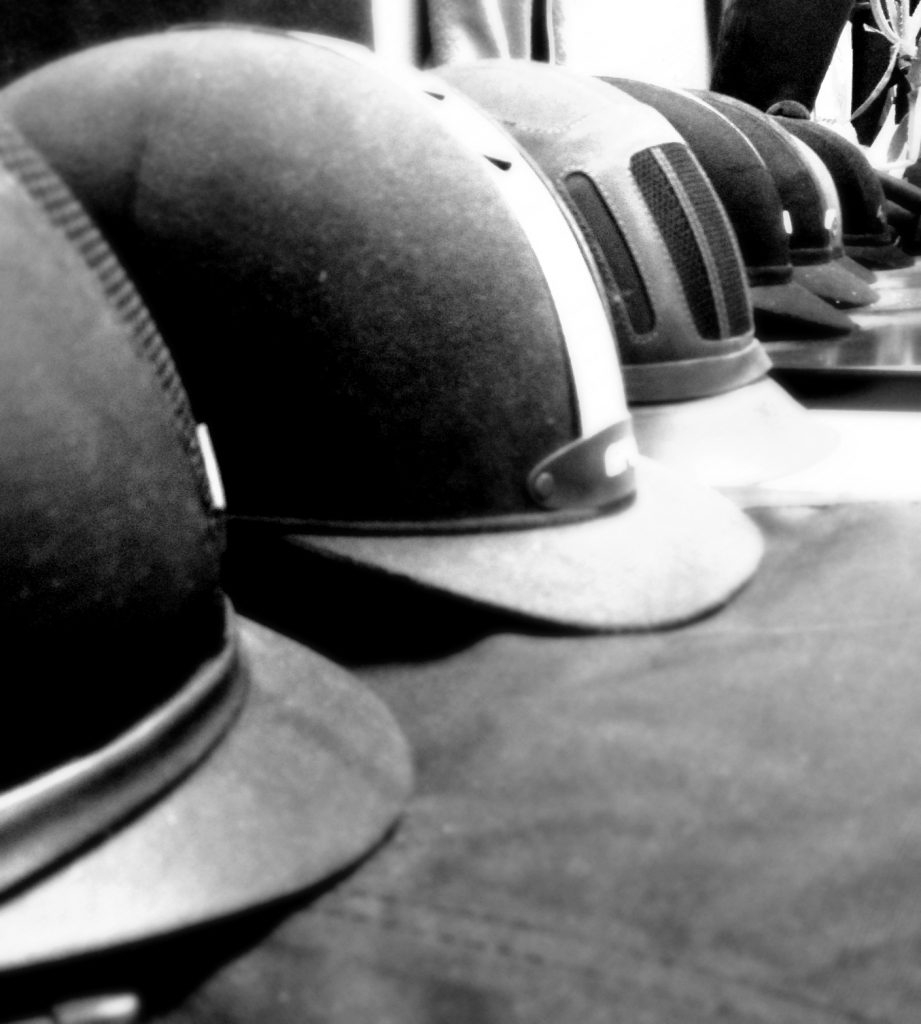Freezing feet and fingers are a common struggle around the barn in the cold winter months. While layering up your core for the cold is easy with the many available options in thermal shirts, vests and fleeces, keeping hands and feet warm can be more challenging. Start layering gloves and it quickly becomes cumbersome and impossible to unhook a halter or latch a paddock gate. Too many socks and you’ve accidentally hindered circulation or caused your feet to sweat and then freeze. Layering doesn’t work so well for the extremities, so keep them warm with the right pairs of winter gloves, winter riding boots and winter socks. Continue reading
Category Archives: Selecting & Sizing Products
Perfect Winter Horse Blankets for Every Horse’s Personality
Guest Post by Stacey Nedrow-Wigmore, Marketing Communications Manager, Weatherbeeta USA
We’ve all been there: standing in front of racks of winter horse blankets in a sea of colors and styles wondering which winter turnout is going to meet your horse’s needs as well as yours. WeatherBeeta has taken the pain out of blanket shopping by suggesting turnouts based on your horse’s personality. Continue reading
6 Types of Horse Blankets You May Need
With winter coming up, it’s important to ensure you have all the types of horse blankets you will need to get your horse comfortably through the cold and wet weather. First you should be careful to evaluate your horse’s living situation, as well as how she specifically reacts to temperature- does your horse run hot? Is she clipped? Is she older or does she have any health conditions that may alter how she is able to regulate her own heat? Then make sure your stock of horse blankets has the right layers to cover all the scenarios your horse may encounter this winter. Here are the six types of horse blankets you may find yourself needing:
Fall Riding Apparel Essentials
After a summer of wearing the most lightweight riding tights and tank tops you could find to stay cool, the weather is finally shifting. The crisp fall weather has arrived, and with it the need for a change in riding wardrobe. Fall riding apparel is all about the layers. Having the right items will keep you comfortable while you’re getting ready to ride, and allow you to shed a layer as you warm up in the saddle. Make sure you have everything you need to be appropriately outfitted this season.
Functional and Waterproof Boots for the Barnyard and Beyond
As a rider, a lot of your time is spent wearing paddock boots or tall boots while riding your horse, but these footwear options are not always your ideal choice for days when you’re not riding. You’ll always spend a good deal of time working around the barn, hand-walking, cleaning stalls, scrubbing buckets or bathing and grooming your horse, when alternate, waterproof boots are better suited. It’s also likely that you may be coming from or going to other activities, such as work, errands or meeting friends, when having fashionable as well as functional footwear would be a great added bonus.
Different Horse Clippers for Different Jobs
Horse clippers are always an asset to have on hand, whether you do all your own grooming, just a few touch-ups here and there, preparing for a show, or clipping to clean up any wound areas for treatment. Certain types of clippers are better suited than others for specific tasks and areas of the horse, so it’s important to select the clipper that will do what you need the best. Consider the following when you go to purchase a new pair of clippers:
How to Select Tall Riding Boots – Style and Size
Selecting a pair of tall riding boots is an important decision, as they are a vital element of your riding gear. Tall boots are both useful for schooling and necessary for showing. There is a large range of tall boots available, from affordable options for any budget to top of the line custom boots made just for you. No matter which tall riding boots you select, the quality and styling make them an investment. It is worth spending the time to consider the different options of tall boots, what style is right for the type of riding you do, and ensure a proper fit.
Benefits of a Leather Halter – Style, Function and Comfort
A halter might be one of the most useful pieces of equipment you have for your horse. They wear it while being groomed, for leading around the property from paddock to stall, during bathing, while being hand grazed, during travel and sometimes while in turnout. The halter is the primary means of controlling your horse when you’re on the ground. While all types of halters have benefits, and a nylon or rope halter is also a great selection, a leather halter is particularly versatile. Here are some reasons why.
Selecting Horse Boots – Protection from the Ground Up
Performance horses carry an immense amount of strength in their bodies, which translates to powerful and graceful movements that need to be protected with the right equipment. There is a lot of weight coming down on the thin legs of a horse, so when you ask them to work performing intricate dressage movements or jumping fences, you need to make sure you are protecting and supporting their legs the way you need to. Horse boots are used to protect from interference from other legs and potential puncture wounds or scrapes, as well as support tendons and ligaments from the shock of impact during riding or turnout.
While many horses, particularly those with big movements in their gaits, wear boots preventatively, it is especially important for those with prior injuries or prone to recurring injury in their legs. If you are considering purchasing new or replacement boots for your horse, here are a few selection points to keep in mind.
It’s All About the Fit: Riding Helmet Fitting Guidelines
A properly fitting helmet is one of the most important purchases you will make. It can help to protect you and instill confidence to aid you in working with your horse. Finding the right one that fits your head best is crucial, so put some time and effort into your new helmet fitting. Start helmet fitting by measuring your head to get an idea for what size you should aim for. A tape measure should be used about one inch above your eyebrows, just above the top of your ears, and around the bump at the back of your head- measuring the widest part of your head. This measurement can then be compared to each brand’s sizing chart.
Helmet fitting, however, is more than just a measurement. Different head shapes call for different helmets, so you may find that the same size fits significantly better in one brand than another. Wear your hair however you will normally wear it with the helmet, try the helmet on, and notice the following:













